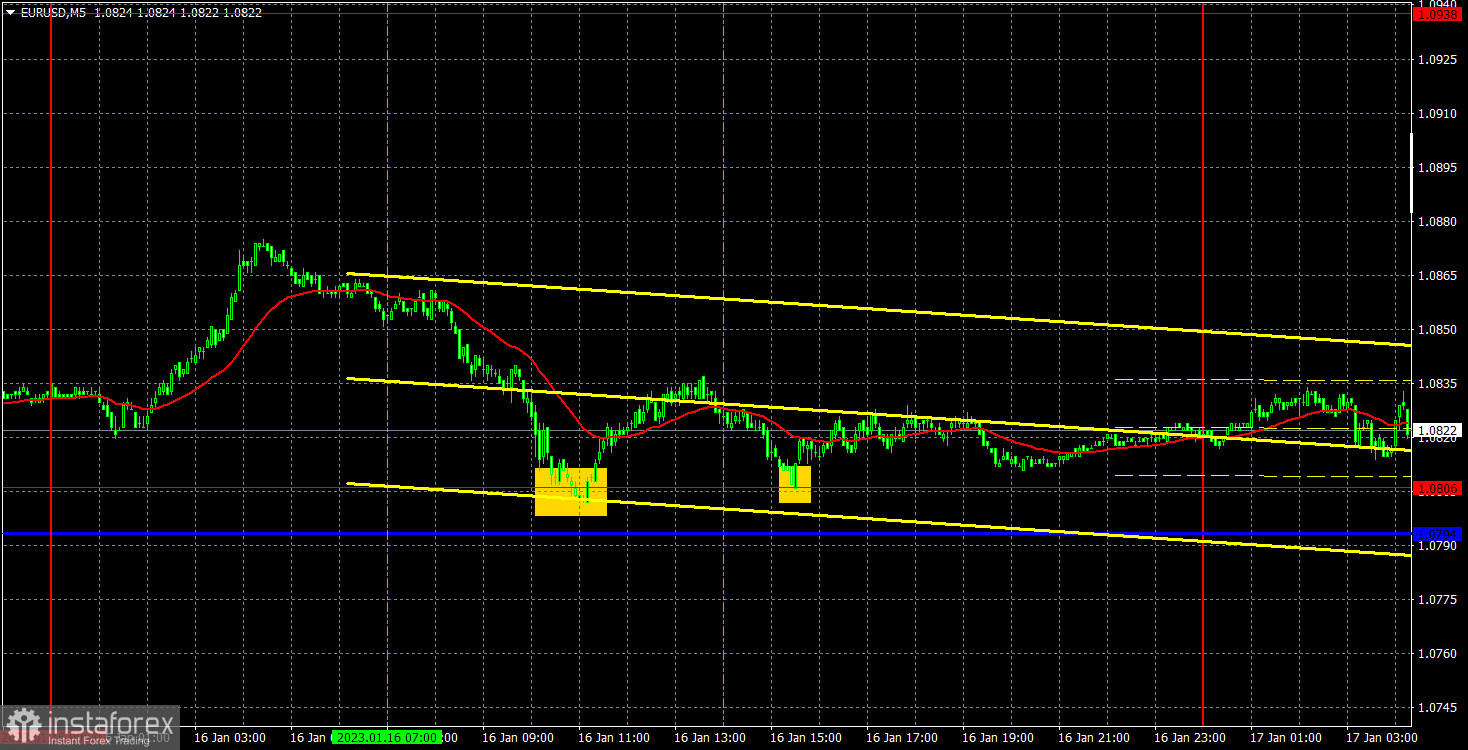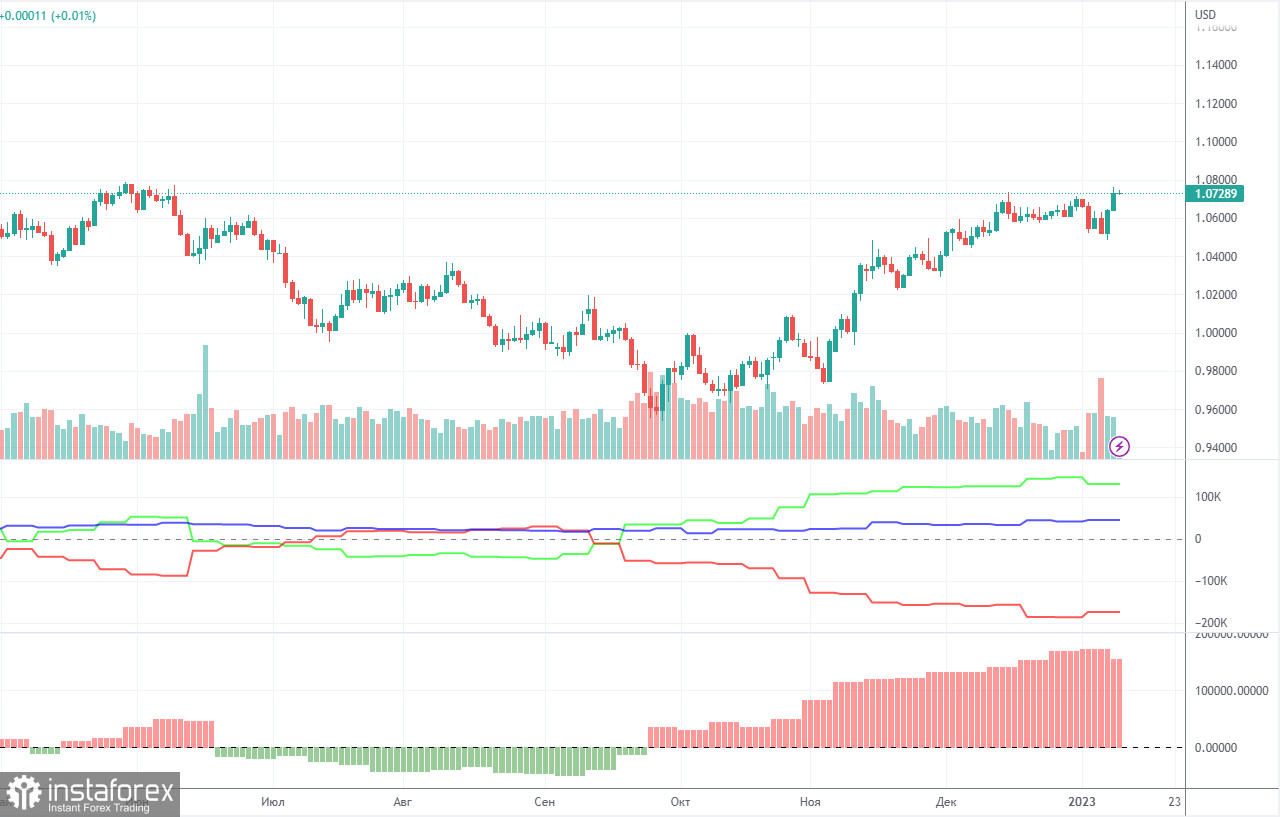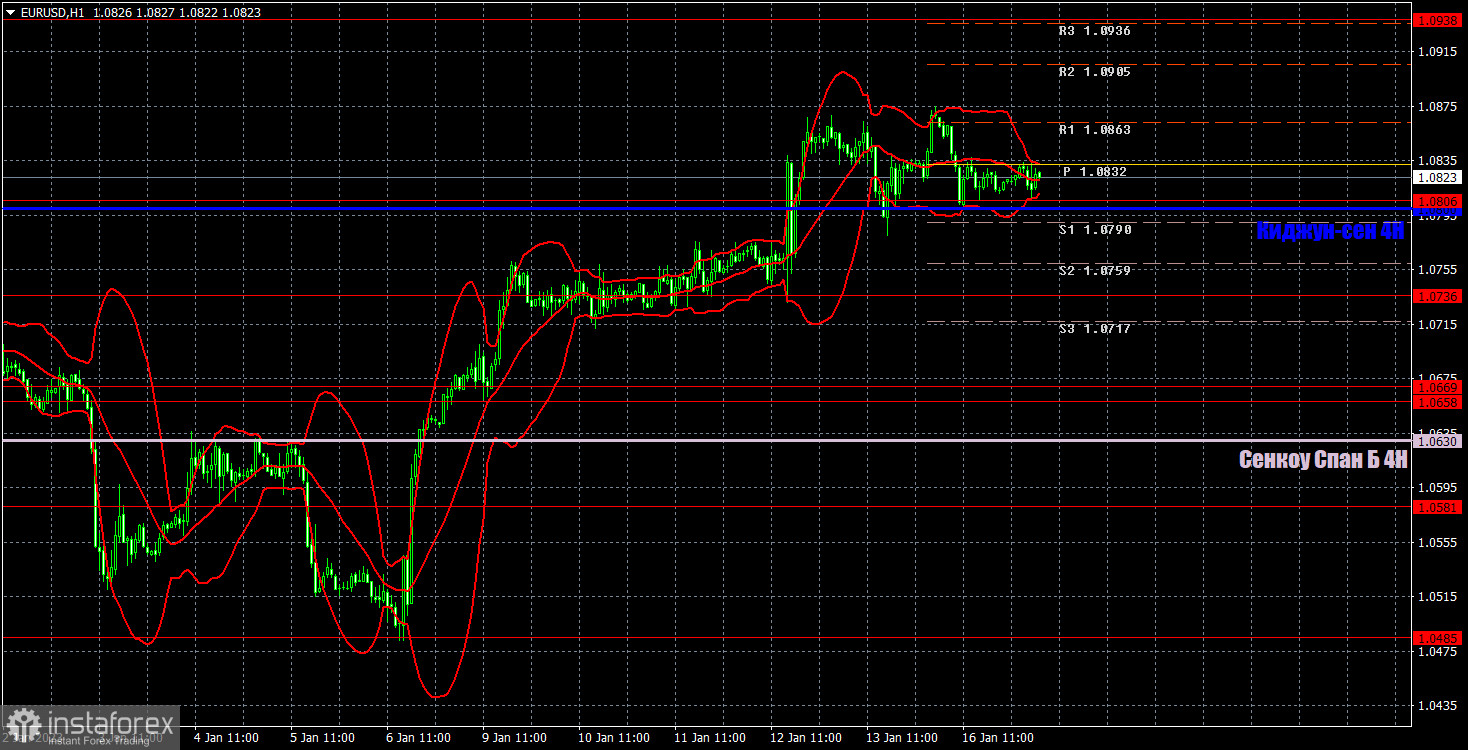M5 chart of EUR/USD

On Monday, EUR/USD tried to start a corrective movement, but it was not even able to settle below the critical line. And the Kijun-Sen line was in close proximity to the price. No pullback either. It would be better to say that the price has simply stopped rising. Such movements are absolutely logical for Monday. Fundamental and macroeconomic backgrounds were absent and traders had nothing to react to. There will be more news and events in the upcoming days, but I'm not sure if they will be important since we only have speeches from representatives of the Federal Reserve and the European Central Bank this week. They may release information which we don't know yet or they may not. This will determine traders' activity and the pair's volatility this week. I still believe that the euro rose too much during the last months and that's why I'm waiting for a bearish correction. Lately, it's been obvious that the upward momentum is fading, so new long positions will require some strong reasons. So far, there are none.
Since the pair showed the trend movement only at night and in the morning, and actually spent most of the day in the flat, I would say that Monday's trading signals were not the best. The price rebounded from 1.0806 twice, creating buy signals. In the first case, it was 20 pips up, which was enough to set Stop-Loss to breakeven. In the second case, it was 8 points, but the price had not fallen below 1.0806 till the end of the day, so the position could be closed manually at zero.
COT report

The COT reports for the euro in the last few months have been fully consistent with what is happening in the market. You can clearly see on the chart that the net position of big players (the second indicator) has been growing since early September. Around the same time, the euro started to grow. At this time, the net position of the non-commercial traders has been bullish and strengthens almost every week, but it is a rather high value that allows us to assume that the upward movement will end soon. Notably, the green and red lines of the first indicator have moved far apart from each other, which often means the end of the trend. During the given period, the number of long positions held by non-commercial traders increased by 16,000, whereas the number of short positions rose by 11,000. Thus, the net positions increased by 5,000. The number of long positions is 135,000 higher than the number of short positions opened by non-commercial traders. So the question now is how long will the big players increase their longs? Moreover, from a technical perspective, a bearish correction should have started a long time ago. In my opinion, this process can not continue for another 2 or 3 months. Even the net position indicator shows that we need to "unload" a bit, that is, to correct. The overall number of short orders exceeds the number of long orders by 48,000 (702,000 vs. 655,000).
H1 chart of EUR/USD

On the one-hour chart, EUR/USD continues the upward movement, which started last Friday. The location above the Kijun-Sen line maintains the uptrend, so the euro can continue to rise, even though there is no fundamental and macroeconomic background. The market only sees the euro. On Tuesday, the pair may trade at the following levels: 1.0658-1.0669, 1.0736, 1.0806, 1.0938, 1.1036, 1.1137 as well as the Senkou Span B (1.0630) and Kijun Sen (1.0800). Lines of the Ichimoku indicator may move during the day, which should be taken into account when determining trading signals. There are also support and resistance levels, but signals are not formed near these levels. Bounces and breakouts of the extreme levels and lines could act as signals. Don't forget about stop-loss orders, if the price covers 15 pips in the right direction. This will prevent you from losses in case of a false signal. There are no important events or reports scheduled for January 17 in the US and EU. John Williams, a member of the Fed's monetary committee, will give a speech late in the evening. Therefore, traders will have nothing to react to, but the euro could still rise.
What we see on the trading charts:
Price levels of support and resistance are thick red lines, near which the movement may end. They do not provide trading signals.
The Kijun-sen and Senkou Span B lines are the lines of the Ichimoku indicator, moved to the one-hour chart from the 4-hour one. They are strong lines.
Extreme levels are thin red lines from which the price bounced earlier. They provide trading signals.
Yellow lines are trend lines, trend channels, and any other technical patterns.
Indicator 1 on the COT charts reflects the net position size of each category of traders.
Indicator 2 on the COT charts reflects the net position size for the non-commercial group.
 English
English 
 Русский
Русский Bahasa Indonesia
Bahasa Indonesia Bahasa Malay
Bahasa Malay ไทย
ไทย Español
Español Deutsch
Deutsch Български
Български Français
Français Tiếng Việt
Tiếng Việt 中文
中文 বাংলা
বাংলা हिन्दी
हिन्दी Čeština
Čeština Українська
Українська Română
Română

